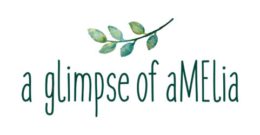Moo Goo 2-1 Bubbly Wash Review
TUESDAY REVIEW
Moo Goo 2-1 Bubbly wash
🔹Aqua (H₂O’s Fancy Name)= Water, a solvent for ingredients that do not like to dissolve in oils but rather in water. Usually number one on the ingredients list, it makes up the majority of the product. The water used in cosmetics is purified and deionized (which means that almost all of the mineral ions inside it are removed). This way, the products can stay more stable over time.
🔹Cocamidopropyl Betaine (Coconut-Derived Cleanser)= Compounds derived from coconut oil and dimethylaminopropylamine. Used as a surfactant to help clean and create a lather. Effects on the immune system, safe in wash-off products. Allergic reactions may cause sensitisation. The production of this surfactant is a multi-step process where chemicals are added to produce intermediary chemicals. As a result, this cleansing agent may have some contaminants in it. Specifically, 3,3-dimethylaminopropylamine (DMAPA) is a cause for concern even in tiny amounts because it is a sensitiser. Cocamidopropyl betaine has this contaminant, too. It is suggested not to use this ingredient on children or babies. This ingredient does have the potential for sensitisation for some people. Scientific studies have found this ingredient to be a severe eye irritant. It’s not the best, but it’s also not the worst and it has been suggested it is a better ingredient than Cocamidopropyl betaine and sits somewhere in the middle of being a low-tox ingredient.
🔹Decyl Glucoside (Glucose-Derived Cleanser) = Safe and/or beneficial. Decyl glucoside is a mild non-ionic surfactant used in cosmetic formularies including baby shampoo and in products for individuals with sensitive skin. Many natural personal care companies use this cleanser because it is plant-derived, biodegradable, and gentle.
🔹Lauryl Glucoside (Glucose-Derived Cleanser)= Is a type of surfactant that works to reduce the overall viscosity of the whole product and helps the liquid pour better (usually liquid-based products), making it easier to use and to rinse it off. Being a surfactant, they do not create foaming bubbles. Lauryl glucoside is made by combining sugar with either palm kernel oil, coconut, or corn sugar in an acidic solution to create it. Given it is plant-derived the Environmental Working Group has rated this a low 1/10 toxicity rating.
🔹Coco Glucoside (Glucose-Derived Cleanser) = Foaming agent. Determined safe for use in cosmetics subject to concentration. Coconut oil and fruit sugars are both renewable resources. Can be genetically modified. Considered a low hazard to health.
🔹Glyceryl Oleate (Glycerin Based Conditioner) = May cause irritation to the skin, eyes or lungs. Safe for most people if used in up to 5% of the product. May be Genetically Modified, May be animal-derived, may be Palm oil derived. Best avoided if vegan
🔹Sodium Cocoyl Sarcosinate (Coconut-Derived Cleanser) = Determined safe for use in cosmetics with concentration limitations. However, caution is advised as insufficient data to determine safety in these products where these ingredients are likely to be inhaled. May be animal-derived. Sodium salt of cocoyl sarcosine ( Hair conditioning agent, cleanser)
🔹Guar Hydroxypropyltrimonium Chloride (Guar Gum)= This is a thickener from the seed of the guar plant. Guar plants are legumes. Guar Hydroxypropyltrimonium Chloride is an organic compound that is a water-soluble, quaternary ammonium-derived derivative of guar gum. It gives conditioning properties to shampoos and after-shampoo hair care products.
��Oryza Sativa (Rice) Bran= Considered safe as a cosmetic ingredient in the current practices of use and concentrations as reflected in the safety assessment by the consumer ingredients review. Used to absorb or soak up oil and liquid.
🔹Piroctone Olamine (Olamine Salt)= Piroctone olamine is a compound sometimes used in the treatment of fungal infections. Piroctone olamine is the ethanolamine salt of the hydroxamic acid derivative piroctone. It is often used in anti-dandruff shampoo as a replacement for the commonly used compound zinc pyrithione. Classified as not being potentially toxic or harmful.
🔹Glyceryl Caprylate (Emollient)= Glyceryl Caprylate is a co-emulsifier that is mainly used to stabilise O/W-emulsions (oil-in-water-emulsions) and is produced from various vegetable oils. Glyceryl Caprylate also restores the natural oils of the skin, regulates skin moisture and acts as a humidifier for the skin.
🔹Humulus Lupulus (Hops) Extract = Hops is a plant. The dried, flowering part of the plant is used to make medicines. Unpleasant odours are caused by skin bacteria when we sweat. The “bitter principles” that help hops preserve beer also fight odours. Hop extract inhibits the growth of odor-causing bacteria.
��Great that it’s fragrance-free. It’s a better Moo Goo option as their other products contain oat fragrance and I can’t quite get to the bottom of exactly what that is. This is a lower-tox version of bubble bath, body wash and hair shampoo. Low-tox bubble bath is very hard to find, so if your kids love bubbles this would be an OK alternative. It is low-tox but still has some ingredients I’d personally avoid. I’ve not used this myself, so I’m not sure how good the bubbles are. Even cleaner alternatives to this product would be:
@cherubrubs_
@bubbaorganics
@melvoryskincare
@drplanetsoap Code “AMELIA” for 10% off
@mymiasskinrelief eczema prone skin

